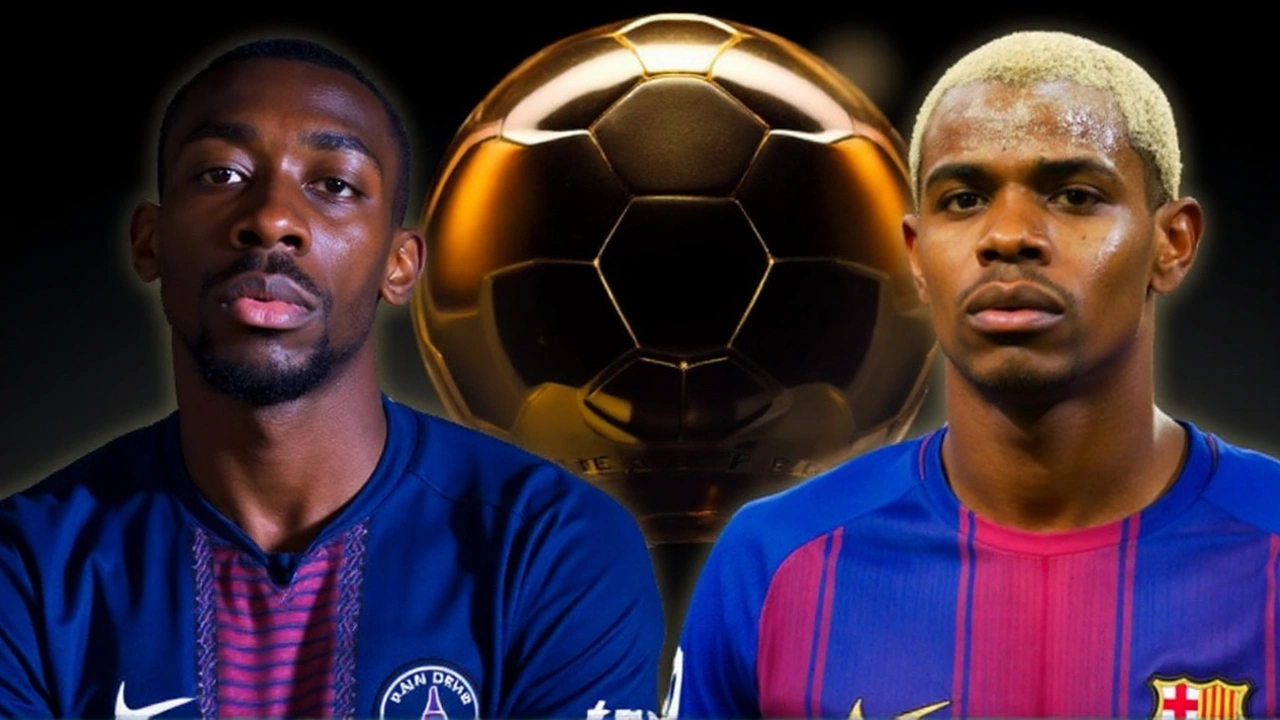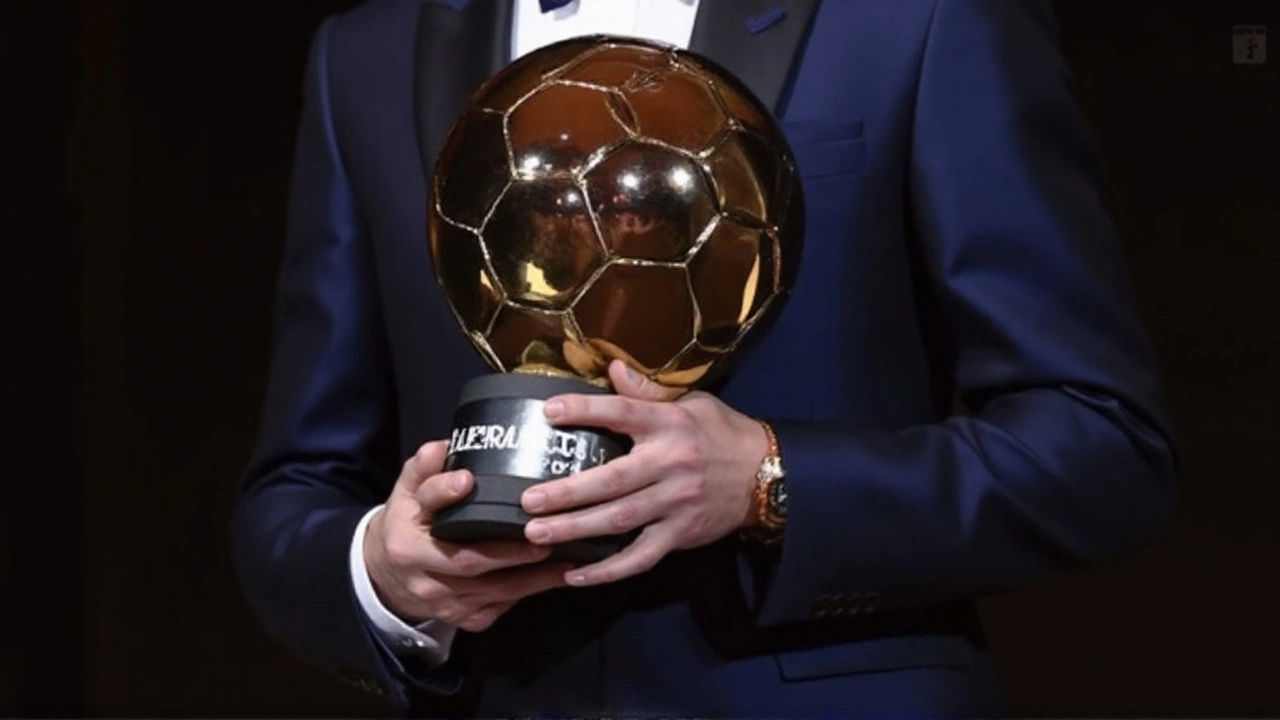When the 2025 Ballon d'Or ceremony rolls around, fans will be glued to the live broadcast, eager to see who lifts the iconic globe. Contrary to what many think, the celebrated player walks away with no direct cash payment. Instead, the accolade comes in the form of a meticulously crafted trophy, valued at roughly Ballon d'Or $3,500, and a cascade of indirect financial perks that can easily eclipse a cash prize.
What the Trophy Actually Is
The famed golden orb is not solid gold. Designers use a brass core, coat it in a thin layer of gold plating, and set it atop a crystal base. This clever construction keeps production costs low while preserving the gleaming look that fans associate with football’s highest individual honor. Its modest material cost—around three and a half thousand dollars—belies the symbolic weight it carries across the globe.
France Football, the French weekly that originated the award, partners with UEFA to manage the voting process and ceremony logistics. Their collaboration guarantees the trophy’s prestige remains untarnished, even without a monetary component attached directly to the winner.

Why the Award Still Pays Off
Winning the Ballon d'Or is a career‑defining moment. Clubs, sponsors and agents all take note, translating the accolade into tangible financial gain. The indirect benefits typically dwarf any hypothetical cash prize, and they manifest in several ways:
- Higher Salary Negotiations: Clubs are often willing to increase a player’s wages or offer a lucrative contract extension to retain the newly crowned world’s best.
- Sponsorship Boosts: Endorsement deals with global brands—sportswear, automotive, tech—skyrocket after the award, sometimes adding multi‑million‑dollar clauses.
- Transfer Market Premium: A Ballon d'Or winner’s market value can jump by 30‑50%, influencing transfer fees and resale percentages.
- Media Appearances: Television and advertising slots become more plentiful, providing additional revenue streams.
- Personal Brand Growth: Social media followings explode, opening doors to personal merchandising and influencer deals.
Take the last few winners as case studies. Lionel Messi’s 2021 win preceded a record‑breaking contract renewal with Paris Saint‑Germain, while Karim Benzema’s 2022 triumph coincided with a surge in personal sponsorships, notably with luxury watch brands and sports nutrition firms. Those indirect earnings often amount to several million dollars, far surpassing the trophy’s nominal value.
Beyond the numbers, the award cements a player’s legacy. Being part of the exclusive club of Ballon d'Or recipients places a name beside legends such as Maradona, Cruyff and Ronaldinho. That historical prestige fuels post‑retirement opportunities—coaching roles, punditry contracts, and ambassadorial positions—that continue to generate income long after the last match is played.
As the shortlist for 2025 tightens, speculation swirls around a few standout names: a forward who shattered goal‑scoring records in La Liga, a midfielder whose playmaking defined a Champions League run, and a defender whose leadership anchored a surprise league title. Whoever claims the trophy will join a lineage that transcends the immediate lack of cash, unlocking a cascade of commercial and professional perks that keep the winner financially secure for years to come.

Delaney Lynch
September 23, 2025 AT 03:15Wow, the Ballon d’Or 2025 really highlights how a simple trophy can ignite a financial avalanche for the winner, and it’s fascinating to see how the value goes far beyond the modest $3,500 material cost! The gold‑plated brass core, the crystal base, the meticulous design-each element is a visual metaphor for the layers of opportunity that cascade after the award is lifted, and that symbolism is powerful, absolutely. Players who secure the globe instantly become magnets for lucrative sponsorships, with global brands lining up like eager fans at a derby, ready to sign multi‑million‑dollar deals; the market reacts almost instantly. Clubs, aware of the commercial boost, often offer salary spikes or contract extensions that reflect the player’s elevated brand equity, and agents negotiate clauses that can add another several million to the package, all because of that shimmering orb. Moreover, the media exposure multiplies: television appearances, ad campaigns, and social media engagements surge, turning the player into a household name far beyond the typical fan base, and that exposure translates directly into revenue streams. Social platforms explode with followers, creating a digital megaphone that brands love to amplify, and the influencer deals that follow can be as profitable as traditional endorsements, sometimes even surpassing them. Historically, legends like Messi and Benzema have shown that the ballot’s prestige can reshape contract negotiations, with their post‑win earnings dwarfing the nominal trophy value, a pattern that repeats with each new recipient. Even after retirement, the legacy of a Ballon d’Or winner opens doors to coaching roles, punditry contracts, and ambassadorial positions, ensuring a steady income flow long after the boots are hung up. The absence of a direct cash prize therefore feels like a technicality; the real prize is the cascade of indirect earnings that can amount to tens of millions over a career, a fact that fans sometimes overlook in the excitement of the ceremony. It’s also worth noting that the award enhances a player’s bargaining power in the transfer market, often inflating their market value by 30‑50%, which can lead to record‑breaking transfer fees and sell‑on percentages that benefit both the player and their former clubs. The trophy, modest in material cost, becomes a catalyst for an ecosystem of financial opportunities that reflects the global nature of modern football, intertwining sport, commerce, and celebrity culture in a seamless dance. For younger talents eyeing the accolade, the message is clear: strive for excellence on the pitch, and the financial rewards will follow, often in unexpected ways that far exceed a simple monetary stipend. Fans should celebrate not just the artistic design of the trophy, but also the rippling economic impact it creates across contracts, endorsements, and post‑career ventures, a true testament to the power of prestige in sport. In short, the Ballon d’Or is less about the physical object and more about the brand equity it generates, a phenomenon that continues to shape the football landscape year after year, and it’s absolutely thrilling to watch this evolution unfold. So the next time we watch the ceremony, we can appreciate the hidden fortunes that spin out from that glittering sphere.
Nicholas Mangraviti
September 29, 2025 AT 13:25Winning the Ballon d’Or amplifies a player's brand far beyond any direct cash payout.
Jared Greenwood
October 5, 2025 AT 23:35Our domestic talent deserves the spotlight, and the Ballon d’Or is the ultimate showcase of elite performance. American soccer has been climbing the conversion rate ladder, and when one of our own clinches the award, the ROI for sponsors skyrockets. The media spin machine activates, turning a player into a high‑impact asset for multinational brands, and the financial ripple is palpable across the league. It's a patriotic boost that fuels grassroots development and proves that we can produce world‑class stars without borrowing prestige from Europe. The trophy might not carry a cash check, but the downstream revenue streams are a testament to national football ambition.
Sally Sparrow
October 12, 2025 AT 09:45Honestly, the whole hype around a non‑cash award feels like a relic of outdated marketing. It's a glossy gimmick that masks the fact that clubs exploit the laurels for profit, while the player gets a ceremonial stand‑in for actual earnings. The emphasis on the trophy's aesthetic distracts from the systemic issues of wage disparity and exploitative contracts. If the football world truly valued fairness, they'd replace the ornament with a substantial payout that benefits the athlete directly.
Eric Yee
October 18, 2025 AT 19:55That's a solid point about the marketing spin, but it’s also true that the global buzz brings in brand deals that fans actually see on the field. I think the cultural impact is huge and the money follows, not the other way around. It’s a chill way the sport grows.
Sohila Sandher
October 25, 2025 AT 06:05Hey, don’t be so hard on the trophy – it’s a symbol that inspires the next gen. Players are gonna see that shiny orb and get motivated to work harder, and that’s what really matters. The finance stuff will sort itself out, we’ll see them win big in the future.
Anthony Morgano
October 31, 2025 AT 15:15Great points all around! 😊 The Ballon d’Or is a cool reminder that success isn’t always measured in cash, but in influence and legacy. Looking forward to seeing who rocks the trophy this year! 🌟